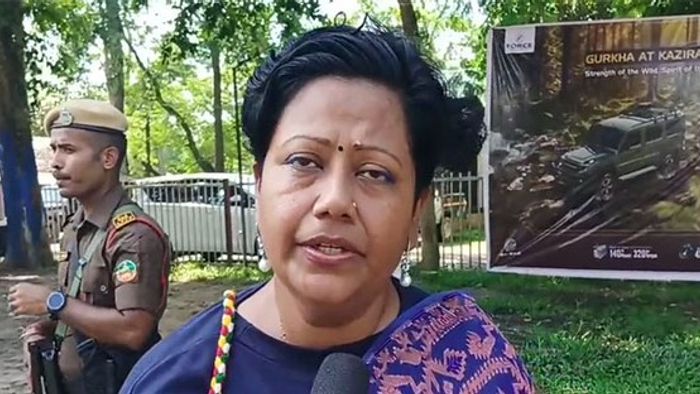Kaziranga's first grassland bird survey records 43 species, finds rare Finn’s weaver colony
Kaziranga National Park’s first grassland bird survey recorded 43 species, including a rare Finn’s weaver colony. The findings will support conservation and habitat protection efforts

- Jul 14, 2025,
- Updated Jul 14, 2025, 4:57 PM IST
Kaziranga National Park and Tiger Reserve has released the findings of its first-ever Grassland Bird Survey, documenting 43 grassland bird species, including one critically endangered, two endangered, and six vulnerable birds, along with several endemic to the Brahmaputra floodplains.
The survey, conducted between March 18 and May 25 this year, covered the Eastern Assam, Biswanath, and Nagaon Wildlife Divisions. It is the park’s first focused assessment of grassland avifauna and highlights the ecological significance of Kaziranga’s floodplain grasslands beyond its better-known megafauna.
“This initiative represents the first dedicated attempt to assess grassland avifauna across this ecologically critical landscape,” said Dr Sonali Ghosh, Field Director of Kaziranga National Park. “Utilising a combination of point count surveys and passive acoustic monitoring, a total of 43 grassland bird species were recorded.”
Among the key discoveries was a breeding colony of the endangered Finn’s Weaver (Ploceus megarhynchus) in the Kohora Range. “This remarkable bird (a LIFER for many birdwatchers), a master nest-builder atop trees, is a vital indicator of grassland health,” Dr Ghosh added. The species is known for its shy behaviour and is rarely observed, making the find particularly significant for conservation.
The survey also focused on ten priority species of global or regional concern, including the Bengal Florican, Swamp Francolin, Finn’s Weaver, Swamp Grass Babbler, Jerdon’s Babbler, Slender-billed Babbler, Black-breasted Parrotbill, Marsh Babbler, Bristled Grassbird, and Indian Grassbird.
Researchers deployed passive acoustic recorders, a non-invasive method that allowed for round-the-clock monitoring even in remote or high-risk areas. This approach proved especially effective in detecting elusive and cryptic bird species.
The survey was a collaborative effort involving scientists, ornithologists, and forest officials. Notable contributors included Dr Asad R Rahmani, Dr Anwar Uddin Choudhury, Dr Udayan Borthakur, Dr Ranjan Kumar Das, Dr Smarajit Ojah, and several others with expertise in avifauna and conservation science.
“The report identifies several critical grassland habitats within Kaziranga that support significant populations of threatened and endemic species. It reinforces the need for focused habitat protection and management,” said Dr Ghosh.
Released on July 11 by the Minister of Environment, Forest and Climate Change during an event at Kaziranga, the report has been welcomed as a major advancement in biodiversity documentation.
“This report represents an important first step in the long-term conservation of grassland birds. It emphasises the need for continued ecological monitoring and adaptive management to safeguard these fragile ecosystems,” Dr Ghosh noted. “It serves as a model for integrating rigorous science into protected area management.”
Assam Forest Minister Chandra Mohan Patowary also shared the news on social media, stating, “Thrilled to share that Kaziranga National Park and Tiger Reserve's first-ever grassland survey has recorded 43 grassland bird species—including 1 Critically Endangered, 2 Endangered, and 6 Vulnerable species, plus several regional endemics... Our commitment to science-backed management continues strong!”
Kaziranga, known globally for its rhinoceroses and tigers, has now positioned itself as a critical refuge for grassland birds, reaffirming its importance within the Indo-Burma biodiversity hotspot.